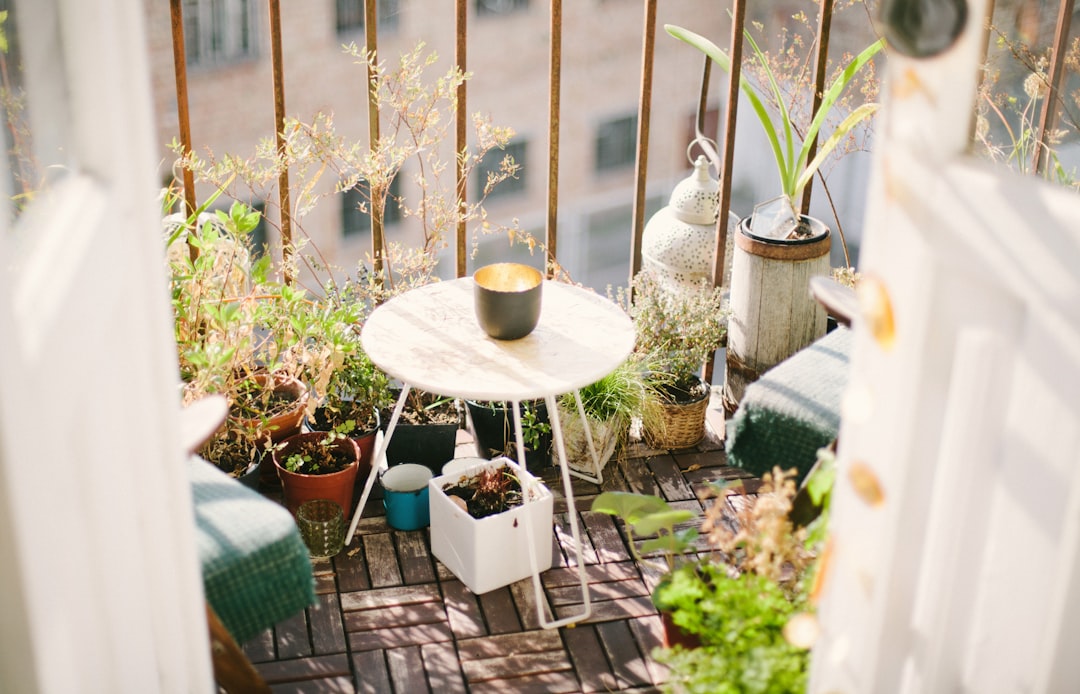Living in an urban setting often means limited outdoor space, but that doesn’t mean you can’t enjoy a lush, green oasis. Balcony container gardening is a fantastic way to bring nature into your home, whether you want to grow fresh herbs, vibrant flowers, or even small fruits and vegetables. With the right approach, even the tiniest balcony can be transformed into a thriving garden.
In this guide, we’ll explore how to maximize greenery in small spaces, choose the best containers and plants, and create a beautiful, functional balcony garden.
Why Choose Balcony Container Gardening?
🏙️ Perfect for Small Spaces – No backyard? No problem! Containers fit anywhere.
🌿 Customizable & Portable – Rearrange pots to change your layout easily.
🍅 Grow Fresh Food – Enjoy homegrown herbs, veggies, and fruits.
💚 Improves Air Quality – Plants filter pollutants, creating a healthier environment.
🌞 Boosts Mood & Reduces Stress – A green balcony is a peaceful retreat.
Step 1: Assess Your Balcony Space
Before you start planting, evaluate your balcony conditions to choose the best plants and layout.
☀️ Sunlight
-
Full sun (6+ hours/day) – Ideal for tomatoes, peppers, and succulents.
-
Partial sun (3–6 hours/day) – Suits herbs like basil, mint, and flowers like begonias.
-
Shade (Less than 3 hours/day) – Best for ferns, hostas, and peace lilies.
🌬️ Wind Exposure
-
High wind areas? Choose sturdy plants like lavender or dwarf evergreens.
-
Use barriers (trellises, outdoor curtains) to shield delicate plants.
🏗️ Balcony Weight Limit
-
Some balconies have weight restrictions. Use lightweight containers (plastic, fabric grow bags) to reduce load.
🌿 Tip: Arrange heavy pots near walls or railing edges for stability.
Step 2: Choosing the Right Containers
✔ Hanging Planters – Great for trailing plants & flowers (ivy, petunias).
✔ Vertical Planters – Maximize space with a wall-mounted pocket garden.
✔ Rail Planters – Attach pots to balcony railings to save floor space.
✔ Stackable or Tiered Planters – Ideal for herbs, greens, and strawberries.
✔ Large Pots for Trees – Small citrus trees or dwarf figs thrive in big containers.
💡 Tip: Always use pots with drainage holes to prevent waterlogging!
Step 3: Selecting the Best Plants for a Balcony Garden
🌱 Edible Balcony Garden (Veggies & Herbs)
🥕 Vegetables: Cherry tomatoes, peppers, spinach, lettuce, radishes, carrots.
🌿 Herbs: Basil, thyme, rosemary, parsley, mint (mint grows best in its own pot!).
🌸 Flowering Balcony Garden
🌞 For sunny balconies: Geraniums, petunias, marigolds, lavender.
🌑 For shaded balconies: Begonias, fuchsias, impatiens, pansies.
🌵 Low-Maintenance Balcony Garden (Drought-Tolerant)
✔ Succulents & Cacti – Aloe vera, jade plant, echeveria.
✔ Ornamental Grasses – Blue fescue, fountain grass.
🌳 Mini Fruit Garden in Containers
🍋 Dwarf fruit trees: Meyer lemon, fig, kumquat.
🍓 Berries: Strawberries, blueberries in pots.
🌿 Tip: Choose compact or dwarf plant varieties for best results in small spaces.
Step 4: Arranging Your Balcony Garden for Maximum Greenery
📍 Use Vertical Space – Install wall-mounted planters or stack shelves.
📍 Group Plants Together – Cluster pots for a lush look while keeping similar sun/water needs together.
📍 Mix Thrillers, Fillers & Spillers – Tall statement plants, bushy fillers, and trailing plants create visual interest.
📍 Use Hanging Baskets – Suspend plants from railings or ceilings for added greenery.
💡 Tip: Mirrors or light-colored walls help reflect light and make the space feel bigger!
Step 5: Caring for Your Balcony Container Garden
💦 Watering
-
Check soil moisture regularly (balcony plants dry out faster!).
-
Morning or evening watering helps prevent evaporation.
-
Self-watering planters reduce watering frequency.
🌿 Fertilizing
-
Use slow-release fertilizers for long-lasting nutrients.
-
Feed veggies & flowers every 2–3 weeks with liquid fertilizer.
🍂 Pruning & Maintenance
-
Deadhead flowers to promote continuous blooms.
-
Trim herbs regularly to encourage bushy growth.
-
Watch for pests (aphids, spider mites) and use organic insecticidal soap if needed.
Bonus: Balcony Garden Design Ideas
🏡 Cozy Urban Retreat – Add a small table, fairy lights, and soft cushions for a peaceful escape.
🌸 Floral Paradise – Arrange bright blooms in decorative ceramic pots for a cottage-style garden.
🍽️ Edible Balcony – Grow herbs and veggies near a bistro set for easy farm-to-table meals.
🪴 Minimalist Zen Garden – Use neutral-colored pots, bonsai, and smooth stones for a calming vibe.
Final Thoughts
Balcony container gardening is a creative and rewarding way to bring nature into your home—no matter how small your space is! By choosing the right containers, plants, and layout, you can turn any balcony into a green, vibrant retreat.
🌿 Are you planning a balcony garden? Share your ideas and favorite plants in the comments below!

Comments
No comments yet. Be the first to comment!
You must be logged in to comment. Login